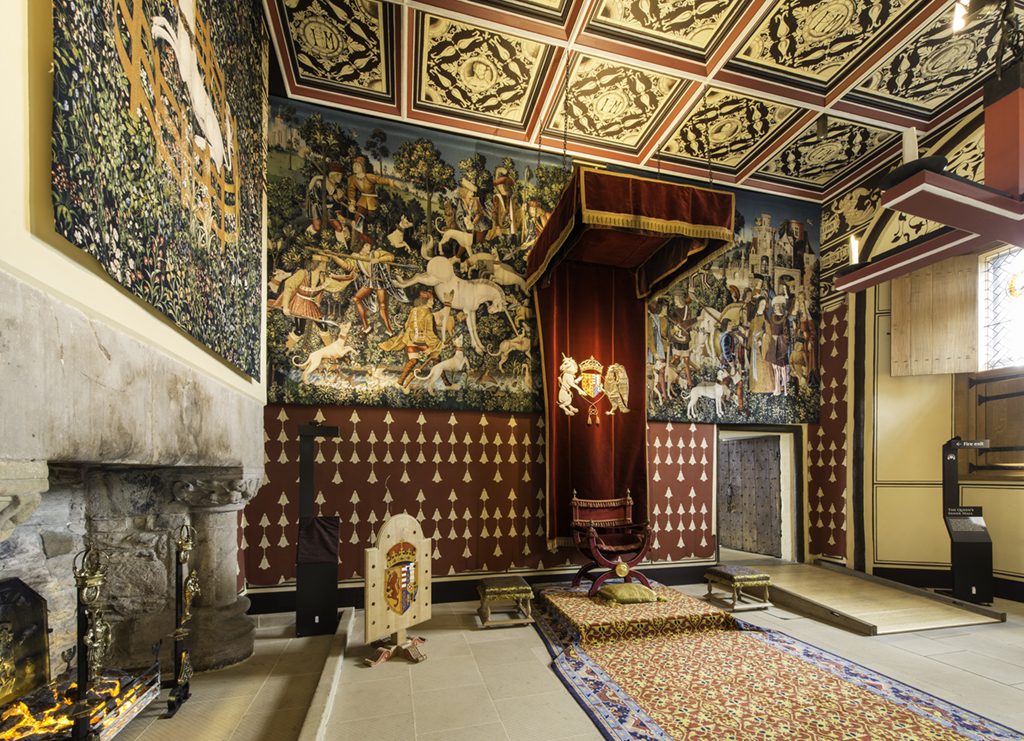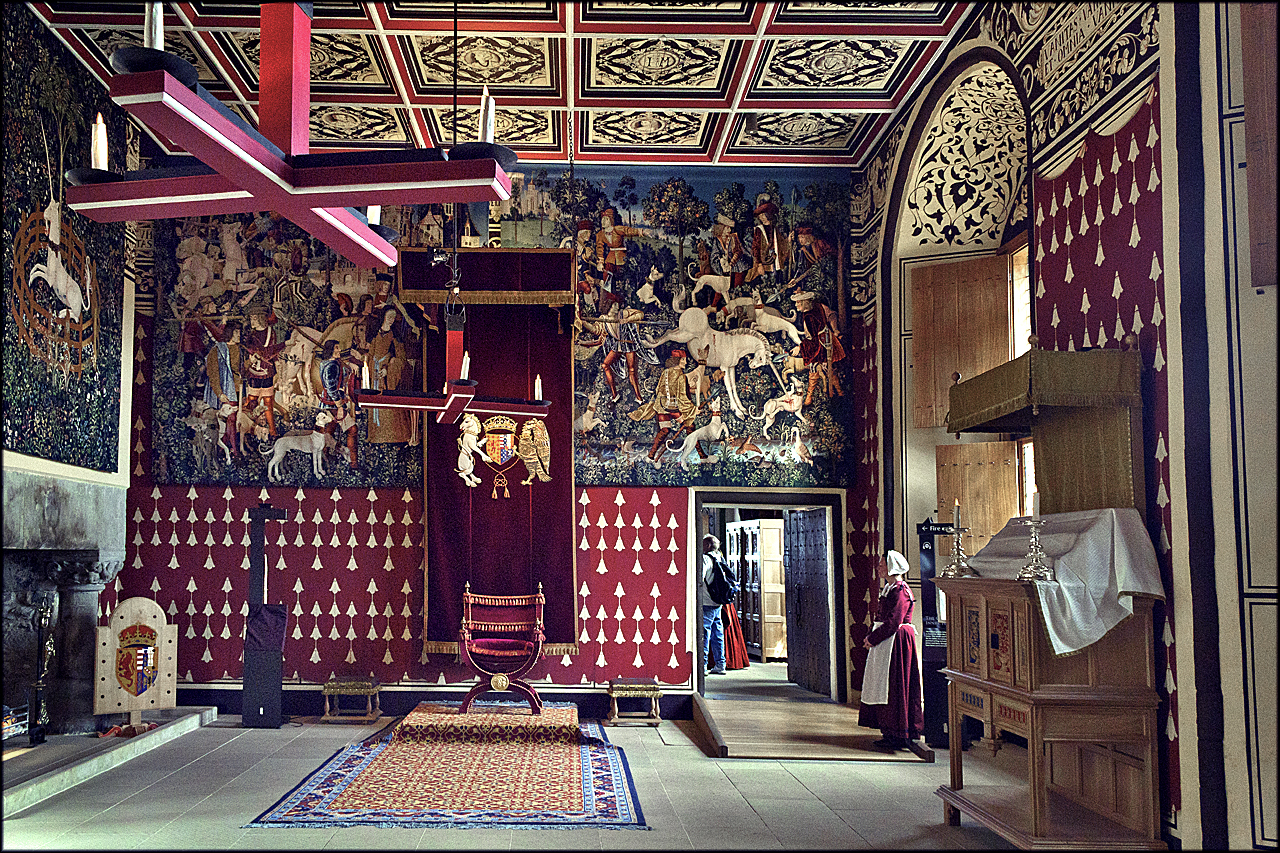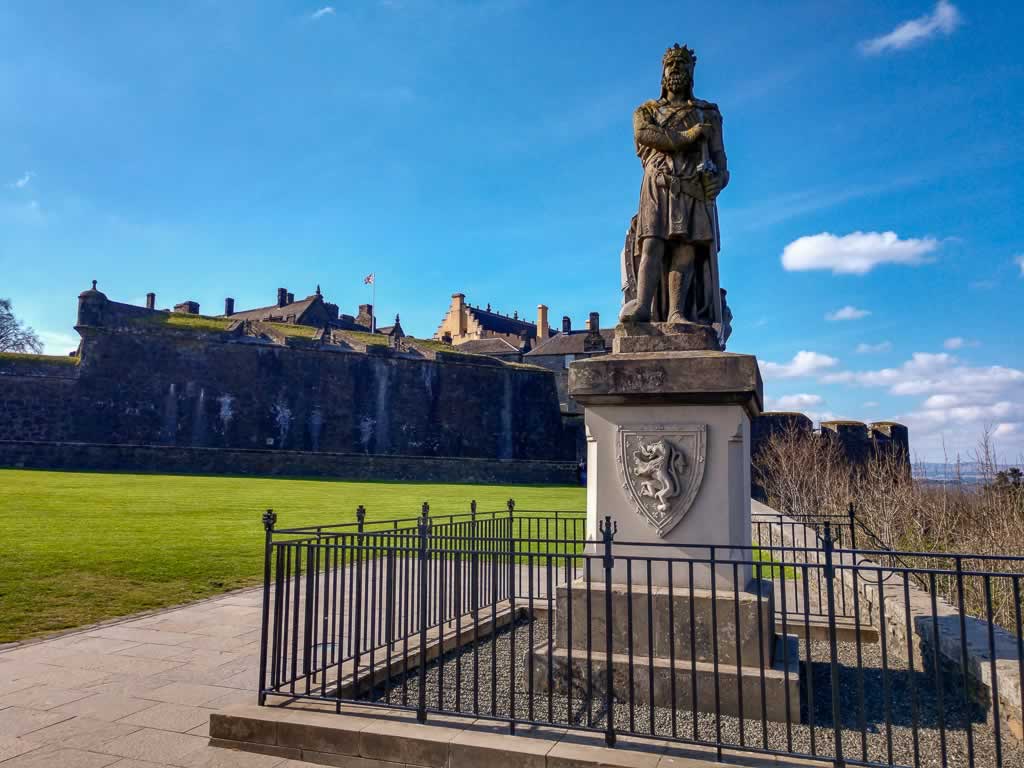Stirling Castle, perched on a rocky crag in Stirling, is one of Scotland’s largest and most historically significant castles. Its strategic location, overlooking the River Forth, made it a key defensive fortification from early times, as it guarded the farthest downstream crossing until the 1890s.
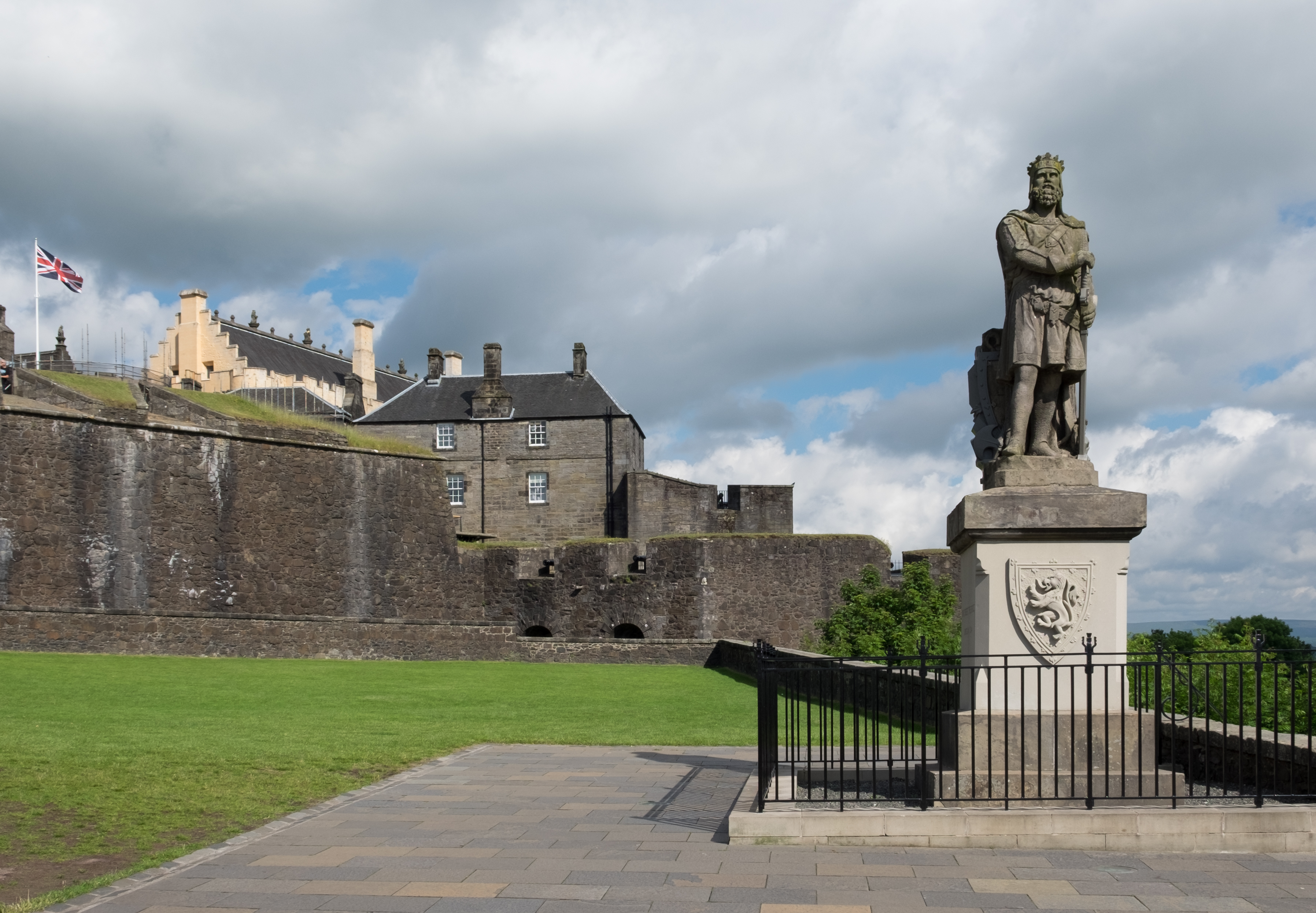
Most of the main buildings in the castle were constructed in the 15th and 16th centuries, with some structures dating back to the 14th century and the outer defenses built in the early 18th century. Stirling Castle wasn’t just a fortress; before the union with England, it was one of the most frequently used Scottish royal residences, serving as a palace as well. Many Scottish kings and queens, including Mary, Queen of Scots, who was crowned there in 1542, were born, crowned, or died at Stirling.

The castle has withstood at least eight sieges, including several during the Wars of Scottish Independence. The last siege was in 1746 when Bonnie Prince Charlie failed to capture it. Today, Stirling Castle is a Scheduled Ancient Monument and a popular tourist attraction managed by Historic Environment Scotland.

Castle Hill, the site of Stirling Castle, is part of the ancient Stirling Sill, a quartz-dolerite formation about 350 million years old, shaped by glaciation into a “crag and tail” feature. This natural prominence likely attracted early settlers, as evidenced by a nearby hill fort on Gowan Hill to the east.
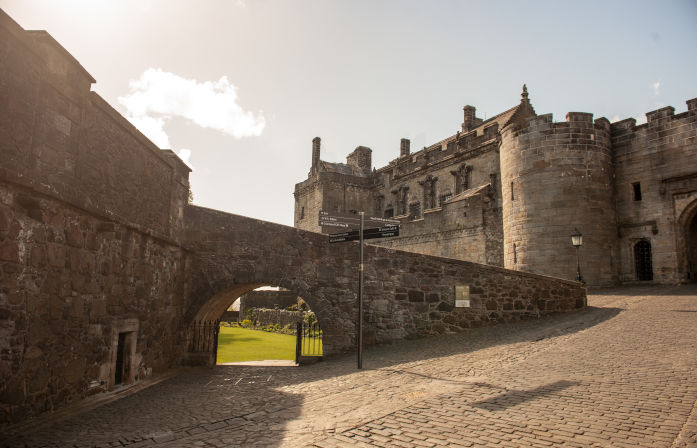
While the Romans chose to establish a fort at Doune instead of Stirling, the hill might have been occupied by the Maeatae tribe during that period. It possibly later served as a stronghold for the Manaw Gododdin and has been associated with a settlement called Iudeu, where King Penda of Mercia besieged King Oswy of Bernicia in 655. Following the Battle of Dun Nechtain thirty years later, the area came under Pictish control. However, there’s no archaeological evidence of occupation on Castle Hill before the late medieval period.
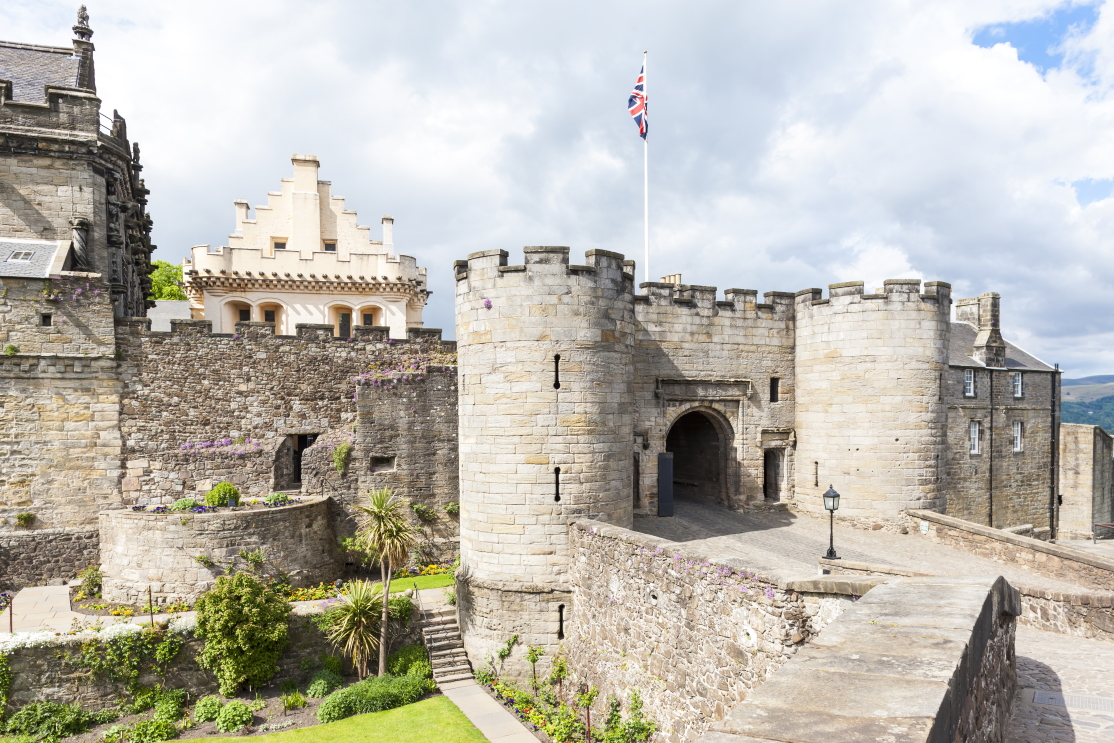
Stirling, poetically known as “Snowdoun,” is steeped in legend. The 16th-century historian Hector Boece claimed that the Romans, under Agricola, fortified Stirling and that Kenneth MacAlpin, the first traditional King of Scotland, besieged a castle there in the 9th century. However, Boece’s reliability is questionable. Another chronicler, William Worcester, linked Stirling to King Arthur’s court. There is also a tradition that St. Monenna founded a chapel at Stirling, similar to her supposed foundation at Edinburgh Castle, though this legend likely conflates various early Christian figures.

The first documented mention of Stirling Castle dates back to around 1110, when King Alexander I dedicated a chapel there. By this time, it was an established royal center, and Alexander died there in 1124. During the reign of David I, Stirling became a royal burgh and an important administrative hub. King William I established a deer park southwest of the castle but, following his capture by the English in 1174, had to surrender several castles, including Stirling, under the Treaty of Falaise. Despite this, there’s no evidence that the English occupied Stirling Castle, and it was formally returned by Richard I of England in 1189. Stirling remained a favored royal residence, with King William I dying there in 1214 and Alexander III creating the New Park for deer hunting in the 1260s.
